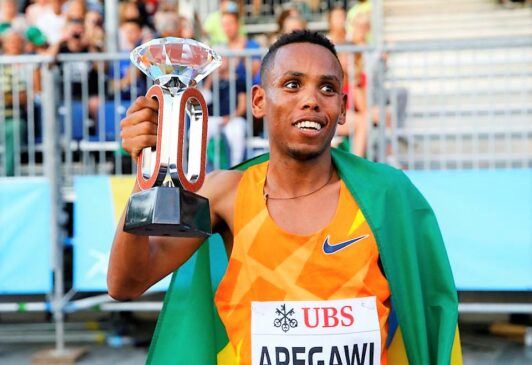Second edition of ‘Sport Tourism Development’ published

When we travel for sport — whether to play it or watch it — we can develop strong bonds with the place we visited to do that. Sport tourism is a fast-growing research area that’s intrigued Dr. Tom Hinch since his youth. And, because it’s become a leisure phenomenon with increasingly major economic and environmental impacts for many countries it’s all the more timely that Hinch and his New Zealand co-author, James Higham of the University of Otago have collaborated on the second edition of their landmark foundational text, “Sport Tourism Development.”
Hinch, whose particular interest is in our attachment to place, says the field is gaining momentum as hallmark events like the Olympic Games and World Cup of Soccer draw hundreds of thousands to travel across continents to experience the spectacle firsthand and, frequently, to travel round the country they visit, taking in natural and urban sights.
“Event, active, and heritage-based sport tourism have been gaining momentum in terms of industry activity,” he says. “Major sporting events attract a lot of attention and countries like South Africa which hosted the World Cup of Soccer in 2010, and Brazil which was awarded both the World Cup of Soccer in 2014 and the Olympic Games in 2016, are examples of countries bidding to promote their country as a player on the world stage.”
A sporting event can also give one a glimpse into a place’s cultural identity, says Hinch. While visiting Clemson University in South Carolina he attended a pre-season football game that drew 74,000 spectators. “It gave me an insight into the culture of place that is sometimes difficult to obtain as a tourist on a standard package deal. Going to a sporting event has a cultural dimension to it: the colours, the pageantry, even the way the fan next to you is experiencing the game — all provide an insight into local culture.
“There are many different travel experiences that people might have, so, for example, when a tour bus disgorges people at a look-off point, they will be impacted in some way, but if you’re actually hiking through the landscape you have an all-sensory connection to the place. It’s not just a visual but a physical experience; your muscles are going to be sore; taking a drink at the top of a climb will taste different to a drink of water in a café. You are aware of the smell of the vegetation, texture of the land, quality of the air. Because of the physical nature of sport, from a participatory perspective, it’s a unique blend of experience that many types of tourism don’t offer.”
In one of the updated chapters in the book, the authors look at “transportable” versus “non-transportable” events. Explains Hinch, “For example, surfing is tied to a beach that has the right kind of ocean conditions, and so on. That is part of what makes that particular destination unique and gives it a competitive advantage in terms of hosting that sporting activity. The ski industry would be another example of a relatively untransportable attraction.
“Other events, such as the Olympics or World Cup of Soccer, are more transportable, where the activity is focused round a stadium. Countries that may not have other tourist attractions may use the event as an attraction to get people there, then look for unique ways to tie it into the cultural context of the event that will initially be the draw. If a country really wants to benefit they have to make those things lasting; the images that people have of the place, the facilities that remain that can be used by the communities for their activities.”
With chapters ranging from sport and culture to environmental impacts on resources, the second edition of the book includes substantive case studies and insightful focus points in each chapter to illustrate key concepts.
Hinch says that while the book is aimed at senior undergraduate students and graduate students new to the field, the book will be a good resource for tourism researchers trying to understand why people travel, and scholars of sport management, who see tourism as an added dimension to their field.
The book is available online from Channel View Publications.
About the Author
Professor Tom Hinch is the Associate Dean, Community and International Engagement in the Faculty of Physical Education and Recreation at the University of Alberta in Canada. Tom has made major contributions to the study of sport tourism related to place, globalization and identity. He is particularly interested in the place-specific cultural aspects of sport as potential mechanisms by which visitors can connect to places meaningfully.
Professor James Higham is Head of the Department of Tourism at the University of Otago in New Zealand. He has made major contributions to deepening the understanding of sports markets, destination management, seasonality and concepts of mobility. His interests coalesce around the opportunities and issues that sports offer for destination development. –This text refers to an out of print or unavailable edition of this title.
Source: Eurekalert.org



